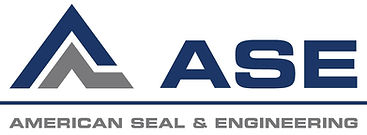
Industry News


1-800-719-1869

O-Seals


The AmeriSeal™ O-Ring Seals are used when elastomers and other non-metallic seals will not seal properly or do not offer the required reliability for the application, usually as a result of temperatures, pressures, or the environment. O-Ring Seals are long lasting seals and unlike non-metallic seals, they are not subject to failure due to incompatibility with the environment, out gassing, or from deterioration due to age.
AmeriSeal™ O-Ring Seals are generally fabricated from tubing consisting of stainless steel or high temperature nickel alloys. These materials are frequently used because they offer resilient properties that enable the seal to “spring-back”.
AmeriSeal™ O-Ring Seals are used as static face type seals and should not be used as a dynamic seal. While the majority of seals are circular, many seals are produced in rectangular, racetrack, and other various shapes and configurations.
We welcome the opportunity to design a seal to fit your application. Whether you are sealing gas or liquid that is -423°F (≈-250°C) or 2000°F (≈1100°C), or vacuum to 100,000 PSI, we have the capability to produce a suitable seal from available material.
The following are key elements in specifying the proper seal determining the base material:
Temperature limits/duration
Media to be sealed
System pressure
Available seating load
Plating and Coatings:
Plating or coating of the O-Ring Seal provides a soft malleable surface that will smear into small imperfections in the mating hardware, enhancing seal performance.
Shaped O-Seals:
Metallic O-Ring Seals can be produced in various shapes. The availability of shaped O-Ring Seals permits the design engineer to select the shapes. However, we recommend contacting our Technical Service staff for design assistance of the seal and groove.
Suggested Minimum Radii for Shaped Seals:
Free Height - Minimum Radius:
0.035" - 0.125"
0.062" - 0.250"
0.094" - 0.500"
0.125" - 0.750"
0.156" - 1.50"
0.188" - 2.00"
0.250" - 4.00"
0.375" - 6.00"
0.500" - 10.00"
Application Characteristics:
The typical application places a Metallic O-Ring Seal in an axial compression between two parallel surfaces, which are square to the fluid passage or vessel axis. The seal is usually located in an open or closed groove in one of the surfaces. The seal can also be located in a retainer, which eliminates the need for machining a groove. The mating hardware, when bolted, torqued, clamped, or fastened tightly to the surface which encloses the ring, compresses the seal and forms a positive joint.



